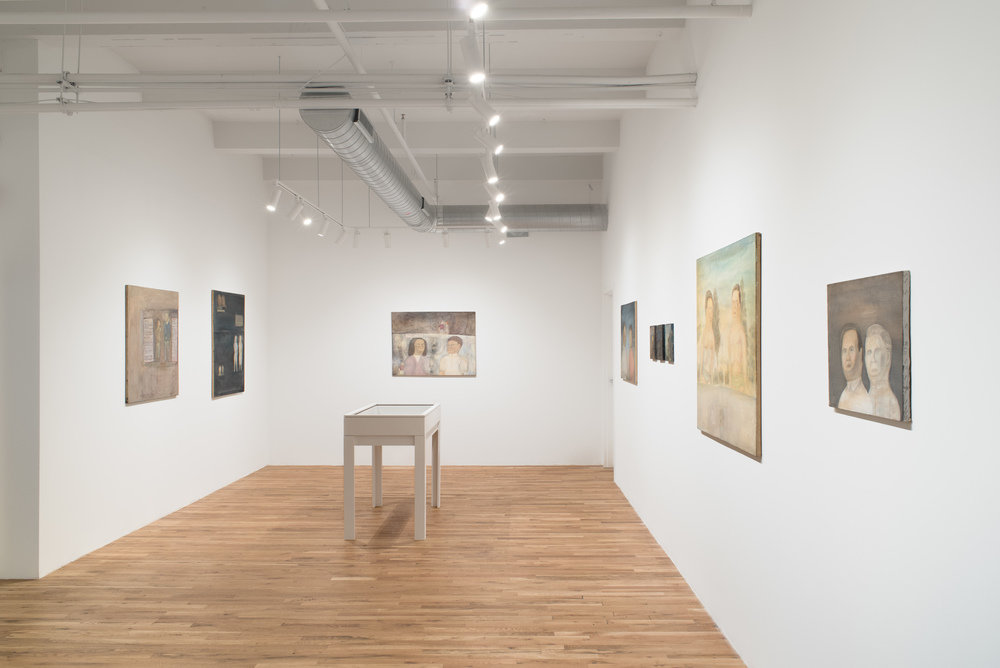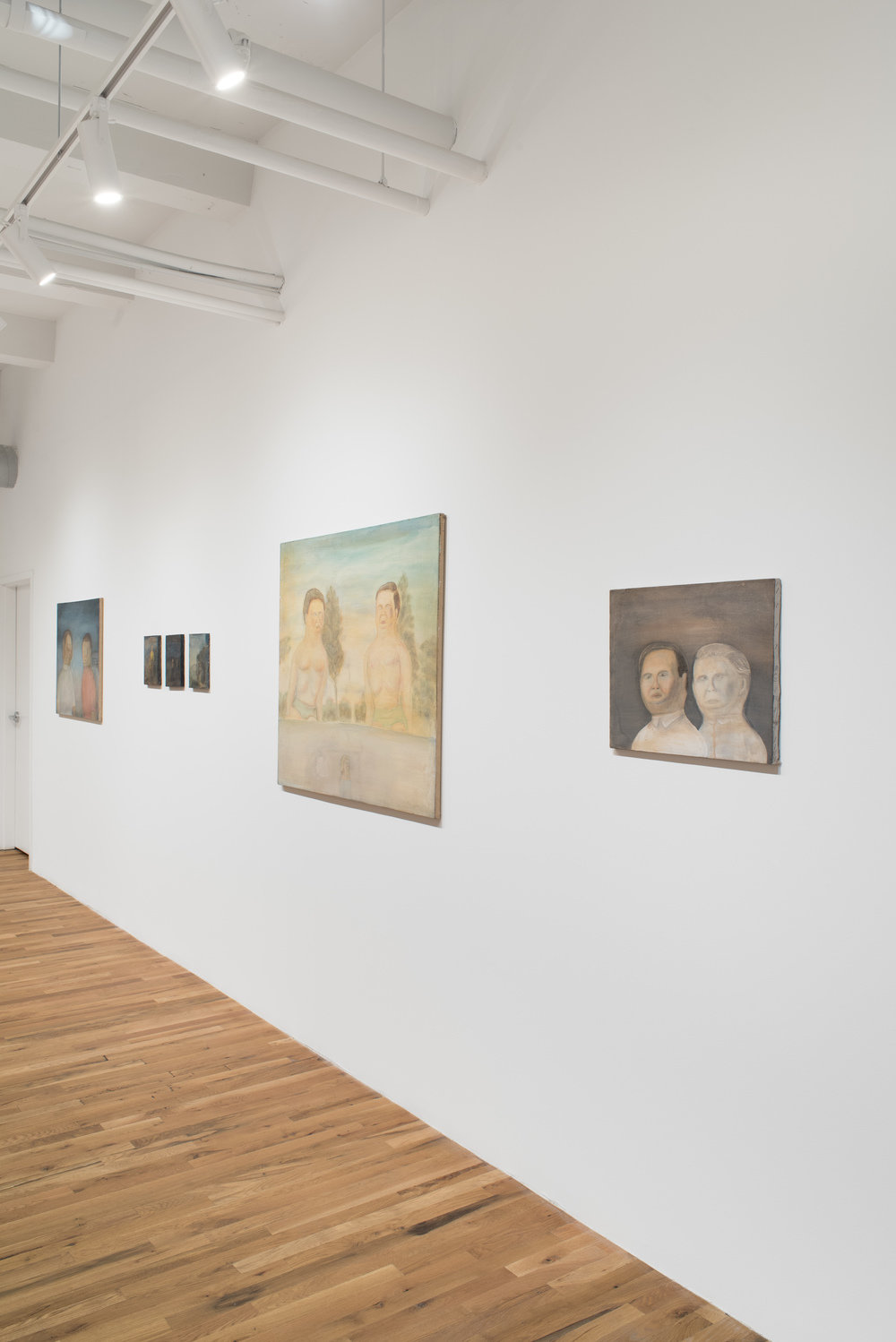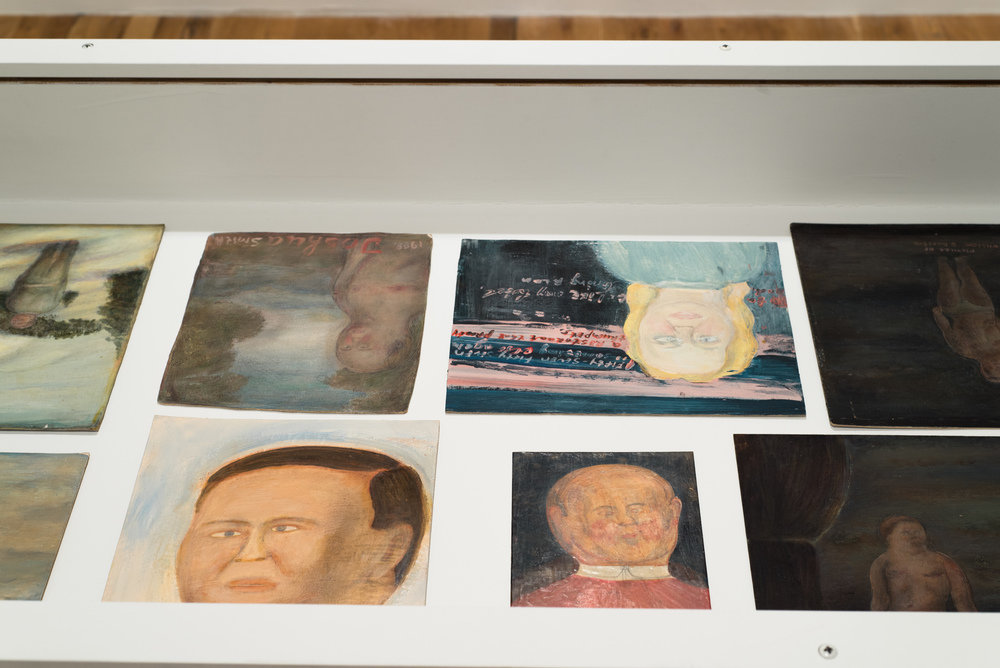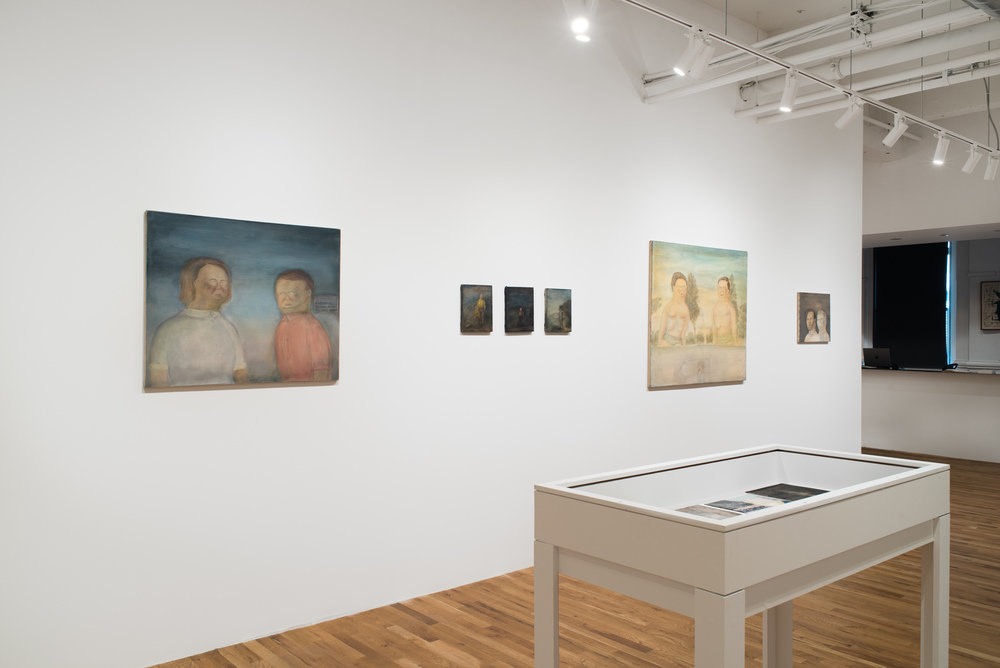Installation





Sep 19 — Nov 04, 2023
Featuring work by: Rafi Chehirian
Concurrent with Mark Mahosky: Vignettes and Souvenirs
Opening reception: Thursday, October 5, 6–8pm
Saturday, October 14, 2pm
Julian Chehirian in conversation with Alex Baker
In collaboration with Fleisher/Ollman, we present American Haze, a never-before-seen body of paintings by my father, Rafi Chehirian (b. Sofia, Bulgaria, 1956; d. Fair Lawn, New Jersey, 2011). The exhibition evokes artistic and cultural migration and is the artist’s first exhibition in the U.S.
I grew up with these paintings. As my father made them, he placed them out of view, in foyers or attics, where I had to kneel to view them under dim light. They document his dive into the otherness of the New York City of the 1990s as a newly arrived immigrant. Painted on used canvases and stretchers found on the streets of Brooklyn, they are conversations with the raw unfamiliarity and materiality of his surroundings, and with the strangers he encountered there. During the pandemic I mailed a package of prints to David Lynch, who I thought might understand them. “Interesting,” I heard back. By way of curator Robert Cozzolino, who organized a David Lynch retrospective at the Pennylvania Academy of the Fine Arts, I was introduced to Alex Baker, Director at Fleisher/Ollman, who agreed to mount an exhibition.
Rafi Chehirian was born in communist Bulgaria to Armenian refugees from Ottoman Bursa who fled the genocide perpetrated by the Ottoman Empire in the early 20th century. His early paintings depict human lives as if they were viewed from a great distance. In some, embryonic, human-like forms cascade over ghostly white canvas. Others, known to him as “charts,” reduce their subjects to a topography of symbols. Produced in the late 1970s and early 1980s, their experimental character prompted their censoring from exhibition until 1987.
In the year before the Berlin Wall fell, he and my mother escaped Bulgaria. In 1990, newly arrived in New York as a refugee, my father found work as a textile dyer. He began to study the English language through conversations with coworkers and strangers, reading his bilingual dictionary in any spare moment. He started to see and paint differently, finding inspiration from Pennsylvania folk artists and spiritual encouragement from the vertiginous Sufi Qawwalis of Nusrat Fateh Ali Khan. While those are the influences that he told me about, I cannot help but see fragments of other things that he saw: ex-votos and retablos, Basquiat, and Eastern Orthodox icons.
Between 1995 and 1999, he distilled the masses of people he encountered on New York streets and subways to conjure moments out of the haze of newness. The vulnerable souls depicted in his paintings float next to texts that read like DIY ESL (English as a Second Language) workbooks. These are simple, quotidian pronouncements that nonetheless disarm and unsettle. The work is tuned to a sense of disorientation, alienation, and solitude that is uncanny, poetic, and familiar in its strangeness. These strangers are at once intimately drawn and jarringly remote, floating in deep, depthless voids. They seem entranced and entombed—holding us, too, in moments of stillness and unknowing, between word and glance.
- Julian Chehirian, August 2023
Rafi Chehirian trained at the National Academy of Art in Bulgaria and was professor of art history and aesthetics at the Tryavna School of Art from 1981-1987. He has shown in two-person exhibitions with Galina Chehirian at 108 Rakovski Gallery in Sofia and at the Varna City Art Gallery in 1987. In 2000 he co-founded with his wife Gali Studio, specializing in Verre églomisé glass work. Their work was exhibited and collected internationally and his own was to appear at the Philadelphia Museum of Art Craft Show in 2011 before his untimely passing. Posthumous retrospectives of his Bulgarian-era paintings were held at Contrast Gallery (2018) and Varna City Art Gallery (2021). His work was included in the group exhibition "Open Art Files: Notes and Footnotes" at Kapana Gallery in Plovdiv (2019). In 2018, his American paintings were part of a performance-installation presented by Julian Chehirian at Rhizome, Washington, D.C.




